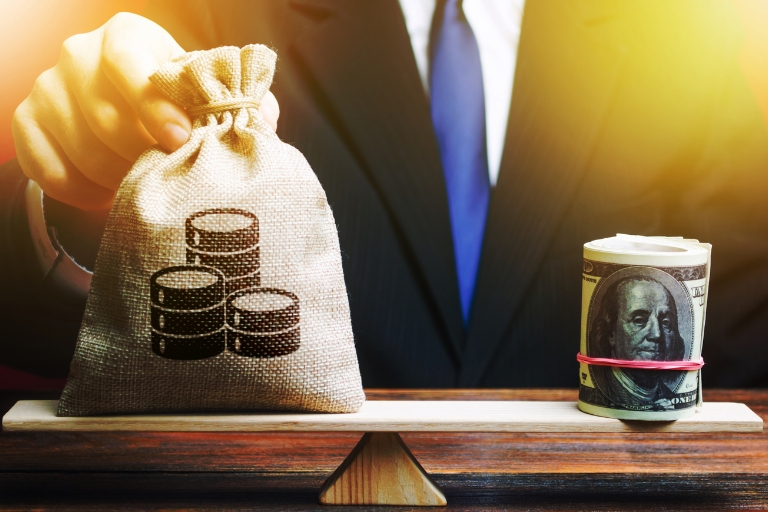Ladies and gentlemen, boys and girls, gather around as we embark on a thrilling adventure into the world of Depreciation and Tax Planning. Yes, you heard it right! We’re about to make tax planning as exciting as a roller coaster ride. Buckle up!
Depreciation, in the world of finance, is not about your favorite pair of jeans getting worn out. It’s about assets losing their value over time. And no, we’re not talking about your ex. We’re talking about tangible assets like machinery, buildings, and equipment. Now, let’s dive into this hilarious journey of depreciation and tax planning.
Understanding Depreciation
Depreciation is like the ageing process. Just like we humans get older and, let’s face it, less valuable (in the job market, at least), assets also lose their value over time. This process of value reduction is called depreciation. It’s like a financial wrinkle. The more you use an asset, the more it depreciates.

Depreciation is also like a diet. You start with a full plate (the cost of the asset) and over time, you eat away at it (use the asset), reducing its value. The only difference is, with depreciation, you can’t cheat on your diet. The value has to go down.
The Causes of Depreciation
Depreciation happens for a variety of reasons. It could be due to wear and tear from use, or because of technological obsolescence. Yes, your brand-new smartphone will be considered an antique in about two years. That’s depreciation for you!
Another cause of depreciation is the passage of time. Just like cheese gets moldy and wine turns into vinegar, assets also degrade over time, even if they’re not being used. This is known as idle depreciation. It’s like getting grey hairs even though you’re not stressing out.
Methods of Calculating Depreciation
There are several ways to calculate depreciation, and each one is as fun as a different board game. The straight-line method is like Monopoly: you spread the cost evenly over the asset’s life. The declining balance method is like Jenga: you take a bigger piece at the start and smaller pieces as you go along.
The units of production method is like Scrabble: the value depends on how much you use the asset. And the sum-of-the-years’ digits method is like Twister: it’s a bit more complicated and requires some flexibility.
Depreciation and Tax Planning
Now, let’s bring tax planning into the picture. Tax planning is like a game of chess. You need to strategize and plan your moves to minimize your tax liability. And depreciation is one of the knights in this game.
By claiming depreciation, you can reduce your taxable income. It’s like having a coupon for your taxes. The more you depreciate, the less tax you pay. It’s like a sale at the tax store!
Depreciation Expense and Tax Deductions
When you claim depreciation, it’s considered an expense. And expenses are deducted from your income before calculating taxes. So, the more you depreciate, the less income you have to pay taxes on. It’s like eating a lot of appetizers so you don’t have to pay for a big main course.
However, there’s a catch. You can’t just claim any amount you want as depreciation. The tax authorities have rules about how much you can depreciate each year. It’s like a diet plan. You can’t just eat all the calories you want in one day. You have to spread them out over the week.
Capital Allowances and Tax Planning
Capital allowances are another way depreciation comes into play in tax planning. These are deductions you can claim for the cost of certain assets. It’s like getting a discount for buying in bulk.
However, just like with depreciation, there are rules about how much you can claim. And these rules can be as complicated as a Rubik’s cube. But don’t worry, with some planning and strategy, you can solve this puzzle and minimize your tax liability.
Depreciation Strategies in Tax Planning
There are several strategies you can use to maximize your depreciation deductions. One is to buy assets that depreciate quickly. It’s like buying a car that loses half its value as soon as you drive it off the lot. You get to claim a big depreciation expense right away.
Another strategy is to buy assets towards the end of the year. This way, you can claim a full year’s depreciation even though you’ve only had the asset for a short time. It’s like joining a gym in December and claiming you’ve been working out all year.
Accelerated Depreciation
Accelerated depreciation is like a sprint. You claim a large portion of the asset’s cost in the early years and less in the later years. It’s like eating a big breakfast and a small dinner. This can be a great strategy if you want to reduce your taxes sooner rather than later.
However, just like with a sprint, you need to be careful not to burn out. If you claim too much depreciation early on, you might not have enough left to claim in the later years. It’s like eating all your Halloween candy on the first day and having none left for the rest of the week.
Section 179 Deduction
The Section 179 deduction is like a golden ticket. It allows you to deduct the full cost of certain assets in the year you buy them, instead of spreading the cost over several years. It’s like eating your entire birthday cake on your birthday, instead of saving some for later.
However, just like with a golden ticket, there are restrictions. There’s a limit to how much you can deduct, and the asset has to be used for business more than 50% of the time. So, make sure you read the fine print before you claim this deduction.
And there you have it, folks! A hilarious journey through the world of depreciation and tax planning. Remember, with some strategy and planning, you can make depreciation work for you and minimize your tax liability. Now, go forth and depreciate!


